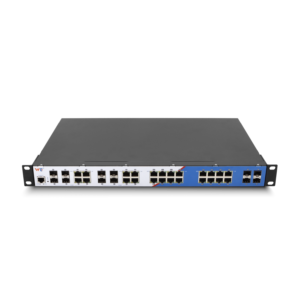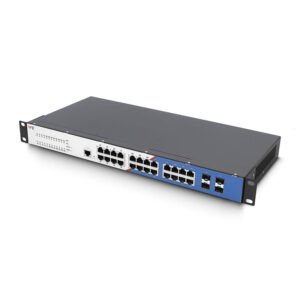Subtotal: 34,196,500₫
Industrial Communications and Applications of Electro-Optical Devices
Introduce
Industrial communications are a critical foundation for automation and control systems in factories, manufacturing facilities and industrial infrastructure. To ensure the continuous and efficient operation of industrial processes, industrial communications need to be fast, reliable and scalable. Electro-optical technology is becoming a leading solution in this field thanks to its fast, stable data transmission and ability to operate in harsh environments.
Benefits of Electro-Optical Technology in Industrial Communications
1. High Data Transfer Speed
Electro-optical technology uses light to transmit data through fiber optic cables, allowing information to be transmitted at very high speeds compared to traditional methods such as copper cables. This is extremely important in industrial environments, where real-time data needs to be transmitted quickly to ensure uninterrupted production processes.
2. Good Anti-Interference Ability
Fiber optic cable is not affected by electromagnetic interference, which makes it an ideal choice for industrial environments with many electrical and electronic devices that can cause interference. This anti-interference capability ensures that the transmitted data signal is clear and accurate.
3. High Reliability
Electro-optical technology provides a stable and durable connection, minimizing the possibility of data loss and connection problems. In industrial systems, this means minimizing downtime and enhancing overall system performance.
4. Ability to Withstand Harsh Environments
Fiber optic cables are capable of operating well in environments with high temperatures, high humidity, and other harsh environmental factors. This makes electro-optical technology suitable for industrial applications in areas with difficult conditions.
Applications of Optoelectronic Devices in Industrial Communications
1. Automatic Control System
In factories and manufacturing facilities, automated control systems require data transmission from sensors and controllers to a control center with high speed and accuracy. Electro-optical devices such as optical transmitters and receivers help transmit data quickly and stably, supporting the control and monitoring of production processes.
2. Industrial LAN
Industrial LANs use fiber optic cables to connect network devices in a factory or manufacturing facility. Electro-optical technology helps provide high bandwidth and reliable network connectivity, which is critical for remote management and control of industrial devices.
3. Data Monitoring and Analysis
Industrial monitoring and data analysis systems require the transmission of large volumes of data from sensors and cameras to central analysis systems. Fiber optic cables help transmit this data at high speed and reliability, allowing for efficient data analysis and processing.
4. Connecting the Automation System
In process automation applications, data transmission between automation devices and control systems is critical. Electro-optical technology supports fast and reliable connections between devices, helping to optimize processes and improve performance.
5. Industrial Security System
Electro-optical technology is also used in industrial security systems to transmit data from surveillance cameras and security sensors to control centers. This helps ensure that the security system operates effectively and securely.
The Future of Electro-Optical Technology in Industrial Communications
Electro-optical technology continues to evolve with advances in transmission speed, performance and scalability. In the future, we can expect to see the integration of electro-optical technology into even more industrial applications, with solutions that are more cost-effective and easier to deploy. This will help improve the efficiency of industrial systems, minimize downtime and enhance the competitiveness of businesses.
Conclude
Electro-optical technology is becoming increasingly important in the industrial communications sector due to its ability to provide high bandwidth, high reliability and the ability to withstand harsh environments. Electro-optical devices help improve the performance and stability of industrial systems, from automated control to security monitoring. With the continuous development of technology, we can expect that electro-optical technology will continue to play an important role in improving and optimizing industrial processes in the future.

















 Thiết bị chuyển mạch Quản lý Layer 3 YT-CM3728-4WF8GC16GT
Thiết bị chuyển mạch Quản lý Layer 3 YT-CM3728-4WF8GC16GT  Thiết bị chuyển mạch Quản lý Layer 3 YT-CM5728-4WF24GT
Thiết bị chuyển mạch Quản lý Layer 3 YT-CM5728-4WF24GT